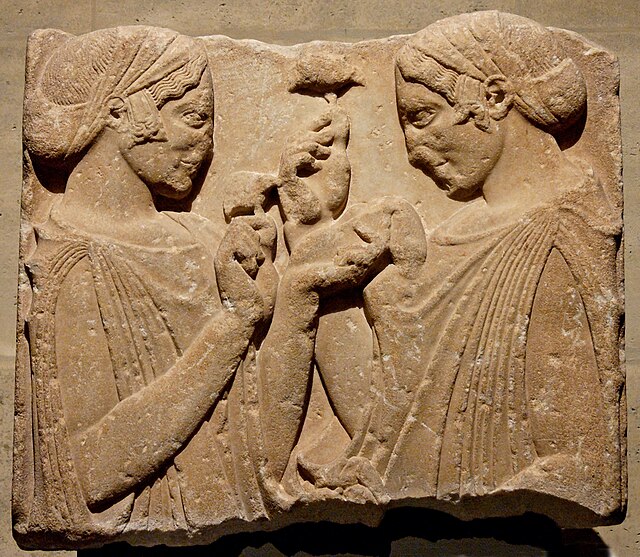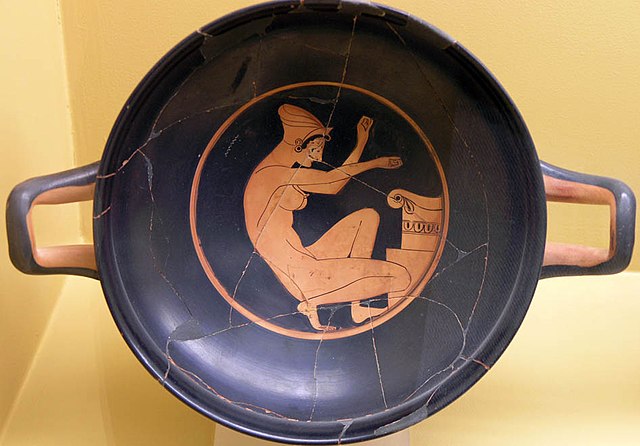A peplos is a body-length garment established as typical attire for women in ancient Greece by c. 500 BC, during the late Archaic and Classical period. It was a long, rectangular cloth with the top edge folded down about halfway, so that what was the top of the rectangle was now draped below the waist, and the bottom of the rectangle was at the ankle. One side of the peplos could be left open, or pinned or sewn together. In Latin and in a Roman context, it could be called a palla.
The Mourning Athena relief with Athena wearing a plain doric overfold chiton, c. 460 BC
So-called "Exaltation de la Fleur" (exaltation of the flower), fragments from a secondary grave stele: two women wearing a peplos and kekryphalos (hairnet), hold poppy or pomegranate flowers, and maybe a small bag of seeds. Parian marble, c. 470–460 BC. From Pharsalos, Thessaly.
The Panathenaea peplos, from the Parthenon frieze
The Peplos Kore, colour reconstruction of statue of c. 530 BC
The status and characteristics of ancient and modern-day women in Greece evolved from the events that occurred in the history of Greece. According to Michael Scott, in his article "The Rise of Women in Ancient Greece", "place of women" and their achievements in ancient Greece was best described by Thucidydes in this quotation: that "The greatest glory [for women] is to be least talked about among men, whether in praise or blame." However, the status of Greek women has undergone change and more advancement upon the onset of the twentieth century. In 1952, they received their right to vote, which led to their earning places and job positions in businesses and in the government of Greece; and they were able to maintain their right to inherit property, even after being married.
Ellie Lambeti, Greek actress
Two Women of Archaic Athens making preparations for a wedding, Displayed on ceramic painting from the 5th century BC
Woman kneeling before an altar. Attic red-figure kylix, 5th BC, Stoa of Attalos
A depiction of in the women's quarters of a house, on a classical Greek vase. The photo is focused on a seated woman who is relaxed while fingering a "barbiton" (a stringed instrument).








